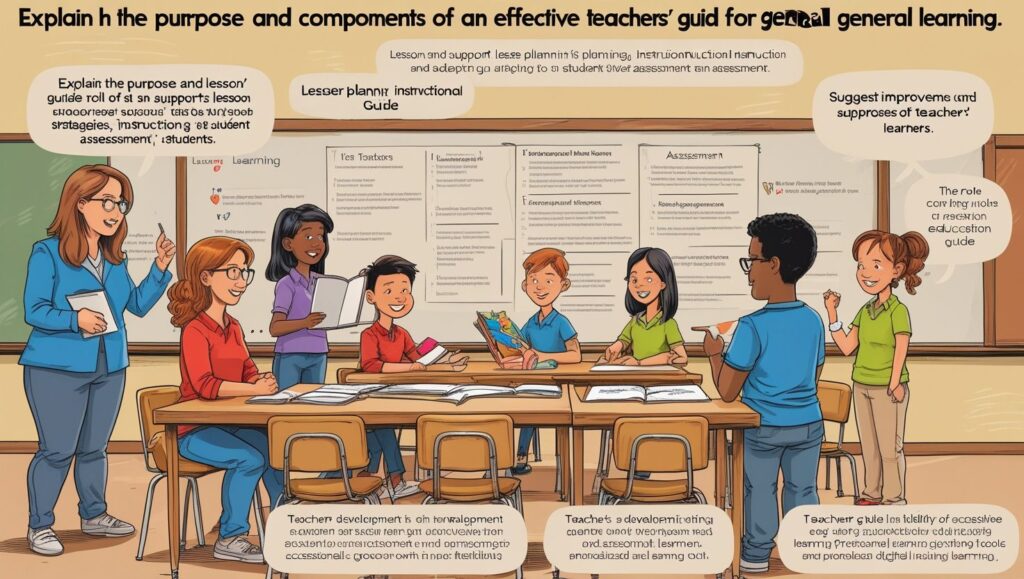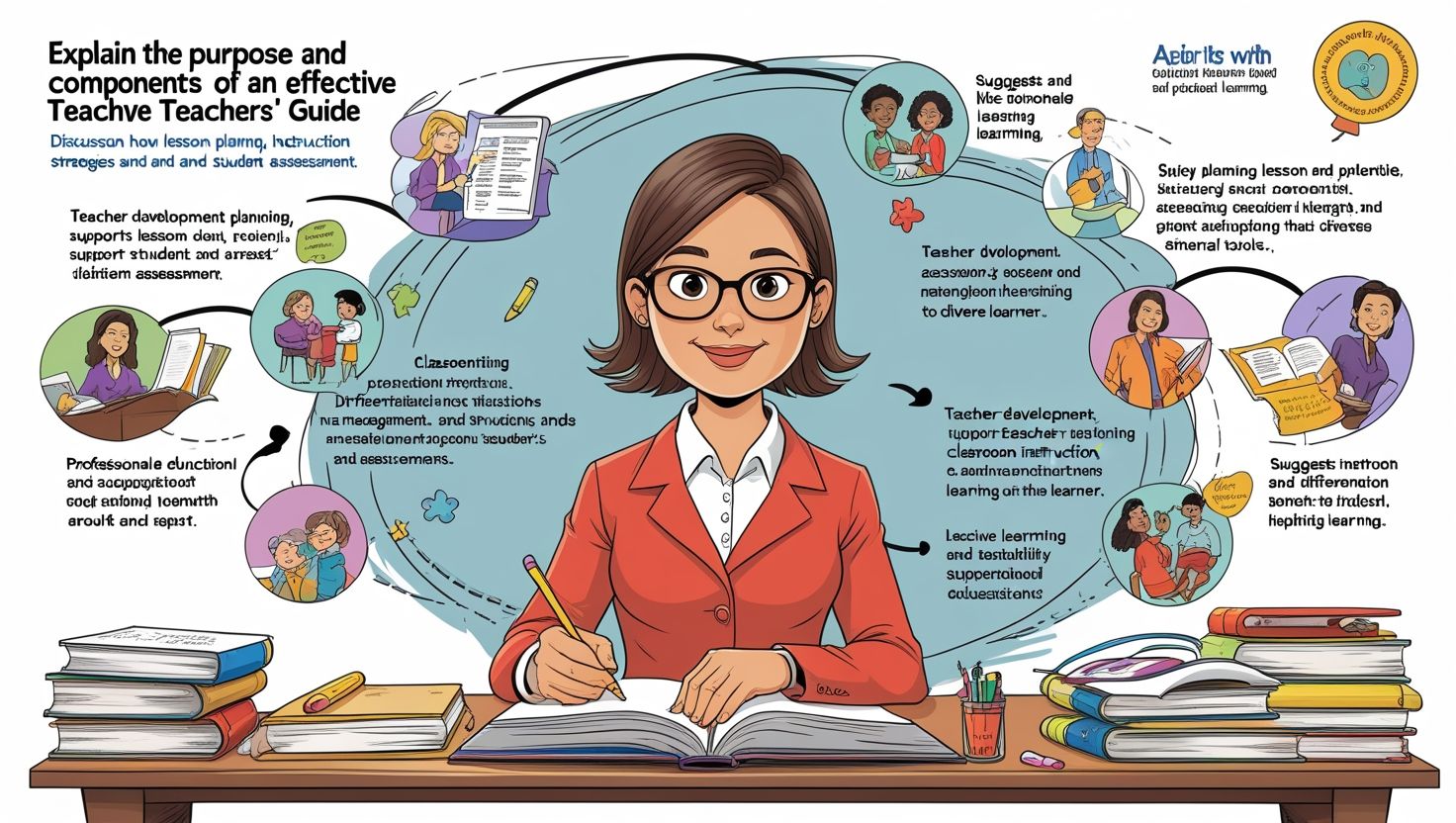Introduction
Teachers’ Guide for General Learnings, Education is the cornerstone of personal and societal development, and teachers serve as the primary facilitators of learning. Regardless of the subject or grade level, a teacher’s role extends beyond the delivery of content—it involves nurturing curiosity, shaping behavior, and building lifelong learning habits in students. A teacher’s success often depends on a solid understanding of general learning principles and the ability to adapt those principles to a variety of contexts. This comprehensive guide provides insights into the general learning strategies every teacher should adopt, equipping them to foster meaningful, effective, and inclusive learning environments.
1. Understanding the Learner
To guide learning effectively, a teacher must understand who the learners are.
- 1.1. Learning Styles and Preferences
- Students process information differently—some are visual learners, others auditory, kinesthetic, or reading/writing oriented. Recognizing and incorporating multiple learning styles into teaching ensures more students grasp and retain information.
- 1.2. Developmental Stages
- Knowing the cognitive and emotional development stages helps in setting realistic expectations and choosing age-appropriate teaching methods.
- 1.3. Cultural and Socioeconomic Backgrounds
- Teachers must also be aware of the cultural and economic contexts of their students. These factors influence students’ attitudes, behaviors, and learning capabilities. Culturally responsive teaching promotes respect and inclusivity.
2. Creating a Conducive Learning Environment
- 2.1. Classroom Management
- Effective classroom management is the backbone of learning. Establishing clear rules, consistent routines, and a respectful atmosphere minimizes disruptions and maximizes instructional time.
- 2.2. Physical Setting
- Lighting, seating arrangements, and access to materials all influence how well students can focus. Classrooms should be organized, safe, and stimulating.
- 2.3. Emotional Safety
- Students learn better in environments where they feel valued and supported. Teachers should foster empathy, prevent bullying, and encourage positive interactions.

3. Instructional Strategies for General Learning
- 3.1. Differentiated Instruction
- No two students learn the same way. Differentiation allows teachers to tailor content, process, and products to meet varying needs.
- Content: Vary what is being taught (e.g., texts at different reading levels).
- Process: Use diverse methods like group work, individual projects, or hands-on experiments.
- Product: Allow students to demonstrate learning through essays, presentations, or art.
- 3.2. Active Learning
- Passive learning yields limited retention. Active strategies—such as discussions, debates, role-play, and simulations—engage students and promote deeper understanding.
- 3.3. Scaffolding
- Scaffolding involves breaking tasks into manageable parts and providing support until students can perform independently. This could involve using visual aids, guided practice, or simplified texts.
- 3.4. Inquiry-Based Learning
- Encouraging students to ask questions and explore answers fosters critical thinking. Inquiry-based methods shift the teacher’s role from knowledge-giver to facilitator.
- 3.5. Cross-Disciplinary Teaching
Integrating subjects like math and science or literature and history allows students to see the interconnectedness of knowledge and apply learning in real-life contexts.
4. Incorporating Technology in Learning
- 4.1. Digital Tools and Platforms
- Teachers today have access to various tools—Google Classroom, Kahoot, Padlet, Zoom, and more. Using these wisely can enhance engagement, collaboration, and access to global information.
- 4.2. Multimedia Resources
- Videos, podcasts, and interactive simulations help clarify complex concepts and cater to different learning styles.
- 4.3. Cyber Safety and Digital Literacy
- Teachers should also educate students about responsible internet use, including evaluating sources, protecting privacy, and digital etiquette.
5. Assessment and Feedback
- 5.1. Formative Assessment
- Ongoing assessments like quizzes, observations, and journals help track student progress and inform instruction without the stress of grading.
- 5.2. Summative Assessment
- Final tests or projects measure student achievement at the end of a unit or term. These must be aligned with learning objectives and fair to all students.
- 5.3. Constructive Feedback
- Timely, specific feedback helps students recognize strengths and improve weaknesses. Teachers should focus on effort and growth rather than solely on results.
- 5.4. Self and Peer Assessment
- Encouraging students to evaluate themselves and others develops reflection, responsibility, and teamwork.

6. Motivating Learners
- 6.1. Intrinsic vs. Extrinsic Motivation
- While rewards and praise can encourage short-term effort, long-term motivation comes from helping students find purpose and enjoyment in learning.
- 6.2. Goal Setting
- Helping students set SMART (Specific, Measurable, Achievable, Relevant, Time-bound) goals empowers them to take ownership of their learning.
- 6.3. Celebrating Progress
- Acknowledging both big and small wins increases confidence and perseverance.
7. Inclusion and Equity
- 7.1. Supporting Students
- Teachers must understand individual education plans (IEPs), use adaptive tools, and apply strategies like visual schedules, simplified instructions, or extra time.
- 7.2. Gender and Equity Awareness
- Avoiding gender biases, using inclusive language, and ensuring equal participation opportunities help create balanced classrooms.
- 7.3. Language Learners
- Students learning the language of instruction benefit from visuals, repetition, and pairing with supportive peers.

8. Professional Development for Teachers
8.1. Lifelong Learning
Just as teachers expect students to grow, they too must pursue professional development through courses, workshops, and reading.
- Collaboration with Colleagues
- Sharing experiences, challenges, and strategies with peers enhances teaching quality and boosts morale.
- Reflective Practice
- Regular self-evaluation—through journals, student feedback, or video recordings—helps identify areas for growth.
9. Parent and Community Involvement
- 9.1. Regular Communication
- Updates through newsletters, meetings, or digital apps keep parents informed and involved in their child’s progress.
- 9.2. Community Resources
- Inviting local professionals, using museums or libraries, and organizing educational trips bring real-world context to classroom learning.
- 9.3. Encouraging Home Learning
- Teachers should suggest activities, reading materials, or discussions that extend learning beyond school.
10. Coping with Modern Challenges
- 10.1. Mental Health Awareness
- Teachers should recognize signs of stress, anxiety, or depression among students and seek appropriate interventions.
- 10.2. Pandemic and Remote Learning
- Flexible plans, empathy, and effective digital instruction were crucial during COVID-19. These lessons remain relevant in case of disruptions.
- 10.3. Climate and Global Education
- Incorporating global issues like sustainability, diversity, and citizenship prepares students for informed participation in society.
Conclusion
The role of a teacher is both a privilege and a responsibility. By embracing a holistic approach to learning—one that prioritizes understanding students, adapting methods, integrating technology, and promoting inclusion—teachers can leave a lasting impact on their learners. General learning guidance is not about a one-size-fits-all formula but about cultivating adaptable, reflective, and responsive teaching practices. As education continues to evolve, so must the dedication and strategies of those who lead classrooms, ensuring every learner is inspired, empowered, and equipped for a changing world.
References
- Tomlinson, C. A. (2014). The Differentiated Classroom: Responding to the Needs of All Learners. ASCD.
- Marzano, R. J. (2003). Classroom Management That Works: Research-Based Strategies for Every Teacher. ASCD.
- Vygotsky, L. S. (1978). Mind in Society: The Development of Higher Psychological Processes. Harvard University Press.
- Hattie, J. (2009). Visible Learning: A Synthesis of Over 800 Meta-Analyses Relating to Achievement. Routledge.
- UNESCO. (2021). Teacher Policy Development Guide. Retrieved from https://unesdoc.unesco.org
- OECD. (2020). Teachers and Leaders in Schools: Results from TALIS. OECD Publishing.

5 thoughts on “Teachers’ Guide for General Learnings”